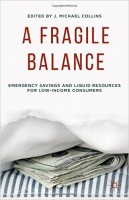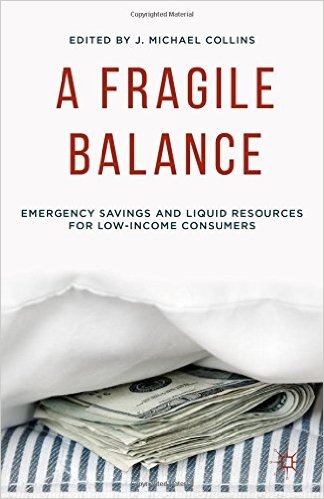 Editor: J. Michael Collins
Editor: J. Michael Collins
Publisher: Palgrave Macmillan – 234 pages
Book Review by: Sonu Chandiram
The United States’ gross domestic product on a per capita basis is $54,597, which is quite impressive because it is the tenth highest in the world according to International Monetary Fund data for 2014. The GDP per capita can be loosely considered as annual income.
This GDP figure is in nominal terms, in contrast against Purchasing Power Parity or PPP terms which takes into account the cost of goods and services based on the local currency in circulation.
In terms of per-capita wealth among adults however, the U.S. ranked only 34th at $301,140 mean wealth per adult in a 2013 ranking among member countries of the Organization for Economic Cooperation and Development. (Australia ranked highest with $402,578).
Income and wealth numbers are one thing, but savings are another matter. The United States is probably one of the highest-consumption and highest-taxed nations on earth, so average savings are meager. According to the U.S. Congressional Budget Office, the average savings per family today is only $9,395 as reflected in this interactive chart found at www.USDebtClock.org.
The focus of attention of this book is on the financial situation of those on the lowest rungs of America’s economic ladder. The editor and authors provide problems supported by data and discuss potential solutions.
The chapters have been written by 22 specialists in this field of study including the editor J. Michael Collins. This book is well researched and Collins provides a lot of documentary evidence to support the material he incisively provides in it. At the end of each chapter, numerous sources of information support the points discussed in it, and provide opportunities for further study.
Documentation and illustration are important in presenting facts, and this book exhibits great value in those respects with 10 figures and 14 tables. The illuminating material presented in each chapter is organized in a simple way, beginning with a brief Introduction, followed by discussions of topics, and a Conclusion. You will also find Notes are provided at the end of each chapter, followed by References.
The best way to inform you what you will (and will not) find in this book is to present the titles of its 14 chapters as shown in its Contents:
- Paying for the Unexpected: Making the Case for a New Generation of Strategies to Boost Emergency Savings, Affording Contingencies, and Liquid Resources for Low-Income Families
- Liquid Savings Patterns and Credit Usage Among the Poor
- Upside Down: The Failure of Federal Tax Policies to Support Emergency Savings
- Save at Home: Building Emergency Savings One Mortgage Payment at a Time
- The SaveUSA Coalition; Using Behavioral Economics to Build Unrestricted Savings at Tax Time
- Refund to Savings Creating Contingency Savings at Tax Time
- Enhancing Financial Capability: TANF Bank Accounts
- Building Emergency Savings Through “Impulse Saving”
- Prosperity SmartSave Card: An Incentivized Emergency Savings Strategy
- Accelerating Savings Among Low-Income Households
- Start2Save; Helping Working Families Meet Unexpected Expenses and Opportunities
- Incorporating Savings into the Debt Management Plan
- Who Said Pigs Can’t Fly? A Learner-Centered Approach to Emergency Savings
- Epilogue: Emergency Savings as a Central Component of Family Financial Security
An example of this is found in Figure 2.1 on page 30 in chapter 2 by Leah Gjertson entitled Liquid Savings Patterns and Credit Usage among the Poor. She shows the results of the 2012 National Financial Capability Study (NFCS was designed in consultation with the U. S. Treasury Department and the President’s Advisory Council on Financial Capability) which collected about 25,000 responses. This study on financial satisfaction revealed that 90 percent were “not at all satisfied” when they had no emergency liquidity.
In this same chapter, Table 2.1 shows the results of a Survey of Consumer Finances (SCF) in 2010 among households earning $20,000 or less a year. Emergency savings of $11,388 was needed to meet living expenses, but alarmingly, they had saved a meager $328 in the last 12 months.
This is a highly informative and enlightening book for those who want to learn more on the current burning issue of income inequality and what can and should be done by individuals, families, and governments to bridge the gap between the rich and the poor.
Editor:
J. Michael Collins is Director of the Center for Financial Security at the University of Wisconsin – Madison, where he is Associate Professor of Public Affairs and Consumer Science. Collins studies consumer decision-making in the financial marketplace with a focus on family financial capability.
Contributors:
Dan Ariely
Sonya Caesar
J. Michael Collins
Krista Comer
Jessica Dorrance
Karan Gill
Leah Gjertson
Michal Grinstein-Weiss
Jayson Halladay
Karen Heisler
Sharon Henderson
Ingrid Holguin
Clinton Key
Ed Khashadourian
Ezra Levin
Cazilia Loibl
Seth Lutter
Kim Manturuk
Margaret McKenna
Dana Mills
Jonathan Mintz
Stephanie Moulton
Dana Perantie
Blair Russell
Anya Samek
Thomas Shapiro







